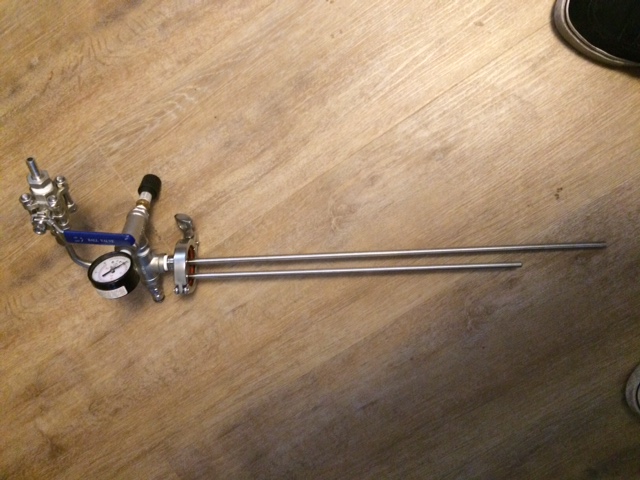WELL I DID TOO! The only problem is, I didn't want to buy or build an expensive keg washer AND you know me, I didn't want a bunch of single parts. I wanted a 1 part does all kind of solution. I am currently using this system in my brewery and I am LOVE, LOVE, LOVING IT!
We did a short video on how I am using it to do the clean cycles. I am sure you all will have your own take on how it can be done and will figure out how it best works for you.
What I did is do a full clean circulation cycle using BPW for about 15 min. Only used about 2 gallons of water/PBW. In that time, I was using my boil kettle to get rinse water to about 170* Rinsed 2X then used Star San and did that for about 5-7 min. I was using enough water and Star San so racking cane wasn't picking up foam. Worked killer!
When I went to transfer wort in, I went in the racking cane and it pushed the foam trapped in the keg out the ball valve.
Here is the killer thing about this. It's all just parts we build and sell in house so if there are mods you want.... We can do it for sure.
We were having an issue with construction noise in the back ground when shooting video, so I did my first voice over video...No making fun of me..LOL
[ame]https://www.youtube.com/watch?v=F0rcFJasxE4&feature=em-share_video_user[/ame]
Cheers
Jay
We did a short video on how I am using it to do the clean cycles. I am sure you all will have your own take on how it can be done and will figure out how it best works for you.
What I did is do a full clean circulation cycle using BPW for about 15 min. Only used about 2 gallons of water/PBW. In that time, I was using my boil kettle to get rinse water to about 170* Rinsed 2X then used Star San and did that for about 5-7 min. I was using enough water and Star San so racking cane wasn't picking up foam. Worked killer!
When I went to transfer wort in, I went in the racking cane and it pushed the foam trapped in the keg out the ball valve.
Here is the killer thing about this. It's all just parts we build and sell in house so if there are mods you want.... We can do it for sure.
We were having an issue with construction noise in the back ground when shooting video, so I did my first voice over video...No making fun of me..LOL
[ame]https://www.youtube.com/watch?v=F0rcFJasxE4&feature=em-share_video_user[/ame]
Cheers
Jay





